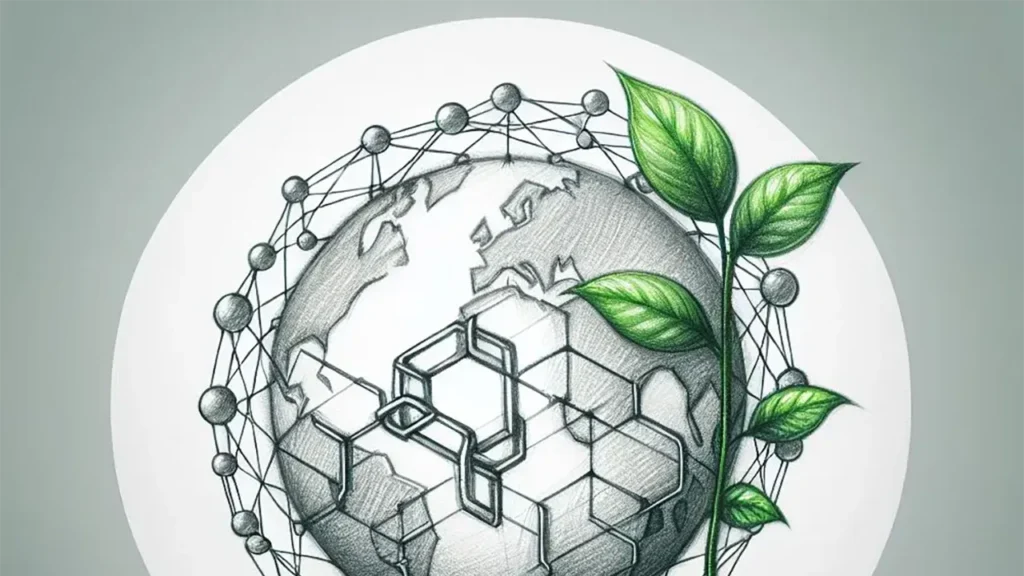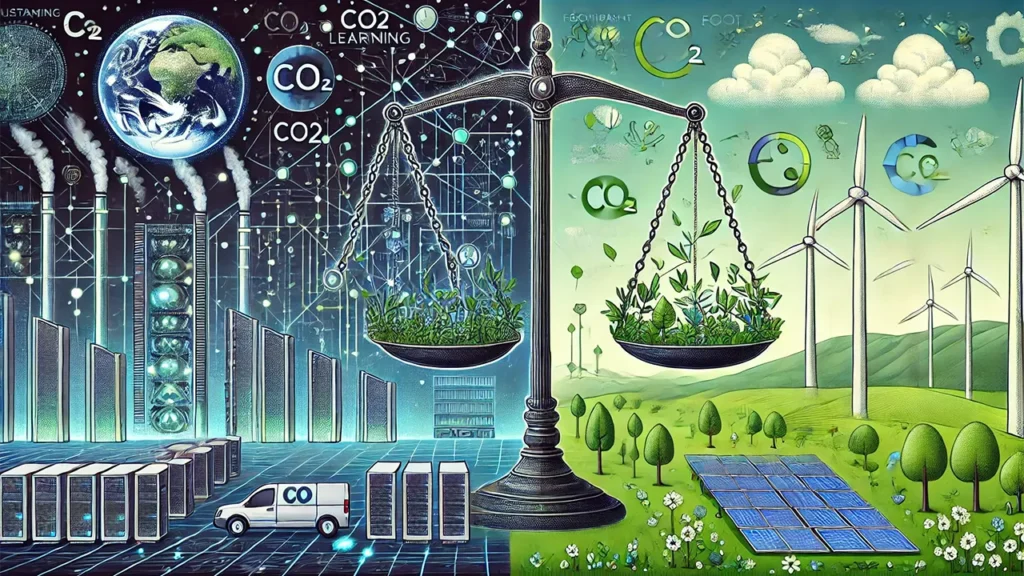Table of Contents
Sustainability meets blockchain
As climate change and environmental degradation reach critical levels, the need for sustainable solutions becomes essential. At the same time, blockchain technology is reshaping industries, offering fresh approaches to complex, long-standing challenges. The convergence of these two transformative forces opens the door to a greener future, where blockchain and sustainability together drive impactful, positive change.
Understanding sustainability
Sustainability encompasses the responsible utilization of resources, minimizing environmental impact, and ensuring the well-being of present and future generations. It is a multifaceted concept that transcends mere environmental considerations and encompasses social, economic, and cultural dimensions. Embracing sustainability is crucial for preserving our planet’s delicate ecosystems, mitigating the effects of climate change, and fostering a more equitable and resilient society.
Blockchain technology
Blockchain is a decentralized, distributed ledger technology that enables secure and transparent record-keeping without the need for a central authority. Originally conceived as the underlying architecture for cryptocurrencies like Bitcoin, blockchain has evolved into a versatile platform with far-reaching applications across various sectors. Its inherent characteristics, such as immutability, transparency, and decentralization, make it a powerful tool for addressing complex challenges, including those related to sustainability.
The potential of blockchain in achieving sustainability goals
The synergy between sustainability and blockchain holds immense potential for driving positive change. By leveraging the unique features of blockchain technology, we can address some of the most pressing sustainability challenges:
- Traceability and transparency: Blockchain’s ability to create an immutable and transparent record of transactions can enhance supply chain transparency, enabling stakeholders to track the origin and journey of products, materials, and resources. This increased visibility can help mitigate environmental impacts, promote ethical sourcing practices, and combat greenwashing.
- Incentivizing sustainable practices: Blockchain-based incentive mechanisms, such as tokenization and smart contracts, can incentivize and reward sustainable behaviors, encouraging individuals, businesses, and communities to adopt eco-friendly practices.
- Decentralized energy systems: Blockchain can facilitate the development of decentralized energy systems, enabling peer-to-peer energy trading and the integration of renewable energy sources into the grid, promoting energy efficiency and reducing carbon footprints.
- Sustainable financing: Blockchain-based platforms can provide transparent and secure channels for sustainable financing, connecting investors with environmentally responsible projects and initiatives, fostering a more sustainable economy.
Examples of blockchain applications in sustainability
The integration of blockchain and sustainability is already underway, with various projects and initiatives demonstrating the potential of this powerful combination:
- Plastic Bank: This initiative leverages blockchain to incentivize the collection and recycling of plastic waste, empowering communities and reducing ocean pollution.
- Bext360: This platform uses blockchain to track and trace the journey of coffee beans from farm to cup, promoting transparency, fair trade practices, and environmental stewardship in the coffee industry.
- Energy Web Foundation: This global non-profit organization is developing a decentralized energy platform based on blockchain technology, enabling the integration of renewable energy sources and facilitating peer-to-peer energy trading.
- GainForest: This blockchain-based platform aims to incentivize and reward sustainable forestry practices, combating deforestation and promoting the conservation of natural habitats.
Advantages and challenges of integrating blockchain and sustainability
The integration of blockchain and sustainability offers numerous advantages, including enhanced transparency, accountability, and trust in sustainable practices. However, it also presents several challenges that must be addressed:
Advantages
- Immutable and transparent record-keeping
- Decentralized and tamper-resistant nature
- Incentivization of sustainable behaviors
- Facilitation of sustainable financing and investment
Challenges
- Scalability and energy consumption concerns
- Regulatory and legal uncertainties
- Interoperability and standardization issues
- Adoption and user awareness barriers
Case studies of successful sustainability and blockchain projects
To illustrate the real-world impact of the sustainability and blockchain synergy, let’s explore a few notable case studies:
- IBM Food Trust: This blockchain-based platform, developed by IBM, aims to enhance transparency and traceability in the food supply chain. By tracking the journey of food products from farm to table, it empowers consumers to make informed choices and promotes sustainable and ethical practices within the food industry.
- Veridium Labs: This blockchain-based platform incentivizes and rewards sustainable behaviors by tokenizing environmental assets, such as carbon credits and renewable energy certificates. Veridium Labs enables transparent and secure trading of these assets, fostering a more sustainable and market-driven approach to environmental protection.
- Plastic Bank: Mentioned earlier, Plastic Bank has successfully implemented a blockchain-based incentive system to combat plastic pollution. By rewarding individuals for collecting and recycling plastic waste, the initiative has not only reduced environmental impact but also provided economic opportunities to marginalized communities.
How blockchain can enhance transparency and accountability in sustainability efforts
Transparency and accountability are crucial pillars of sustainability, and blockchain technology can play a pivotal role in strengthening these foundations. By creating an immutable and decentralized record of transactions and activities, blockchain can provide a trustworthy and auditable trail, enabling stakeholders to verify and validate sustainability claims and initiatives. Furthermore, blockchain’s smart contract functionality can automate and enforce sustainability-related agreements, ensuring that all parties involved adhere to predetermined rules and regulations. This level of transparency and accountability can foster trust among stakeholders, promote responsible practices, and mitigate the risk of greenwashing or misleading sustainability claims.
The role of governments and organizations in promoting the synergy of sustainability and blockchain
While the integration of sustainability and blockchain holds significant promise, its successful implementation requires the concerted efforts of governments, organizations, and various stakeholders. Governments can play a crucial role by establishing regulatory frameworks that support and incentivize the adoption of blockchain-based sustainability solutions, while also addressing potential challenges such as energy consumption and standardization.
Organizations, both public and private, can embrace blockchain technology to enhance their sustainability efforts, foster transparency, and drive positive change within their respective industries. Collaborations between stakeholders, such as businesses, non-profit organizations, and academic institutions, can further accelerate the development and implementation of innovative blockchain-based sustainability solutions. Join the movement towards a greener future by exploring how you can leverage the power of blockchain to drive sustainability within your organization or community. Connect with experts, attend workshops, and stay informed about the latest developments in this exciting field. Together, we can unlock the full potential of this transformative synergy and create a more sustainable world for generations to come.
Looking towards a greener future: The future prospects of sustainability and blockchain
As we look towards the future, the synergy between sustainability and blockchain holds immense potential for driving positive change. With continued innovation, collaboration, and adoption, we can envision a world where:
- Supply chains are fully transparent and accountable, enabling conscious consumption and ethical sourcing practices.
- Renewable energy sources are seamlessly integrated into decentralized energy systems, reducing our reliance on fossil fuels and mitigating climate change.
- Sustainable financing and investment opportunities are readily accessible, fostering the growth of environmentally responsible projects and initiatives.
- Incentive mechanisms encourage and reward sustainable behaviors, empowering individuals and communities to actively participate in environmental conservation efforts.
The future prospects of sustainability and blockchain are vast, and their synergy holds the potential to reshape our relationship with the environment, fostering a more sustainable and equitable world for all.
Wrap-Up
The integration of sustainability and blockchain represents a transformative force, capable of unlocking a greener future for our planet. By leveraging the unique capabilities of blockchain technology, we can enhance transparency, accountability, and trust in sustainability efforts, while incentivizing and rewarding responsible practices. As we navigate the challenges of climate change and environmental degradation, the synergy between these two powerful forces offers a beacon of hope and a path towards a more sustainable future. Embracing this synergy requires collaboration, innovation, and a shared commitment to creating a greener, more resilient world for generations to come. Together, we can harness the power of blockchain to drive sustainability, fostering a future where economic growth and environmental stewardship coexist in harmony, ensuring the well-being of our planet and its inhabitants for years to come.
Literature
- Advancing sustainability with blockchain-based incentives and institutions: https://www.frontiersin.org/journals/blockchain/articles/10.3389/fbloc.2022.963766/full
- Could Blockchain Be Sustainability’s Missing Link?: https://www.forbes.com/sites/servicenow/2022/04/08/could-blockchain-be-sustainabilitys-missing-link/




